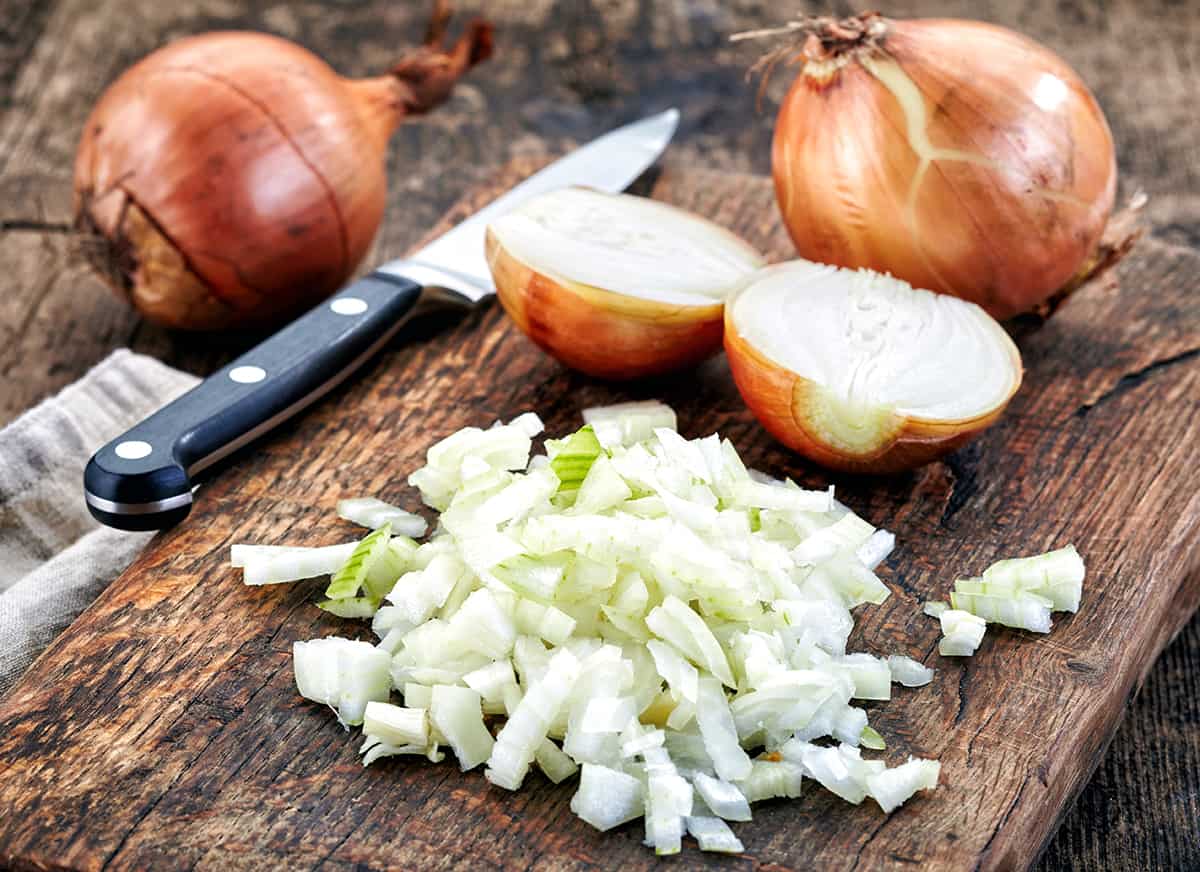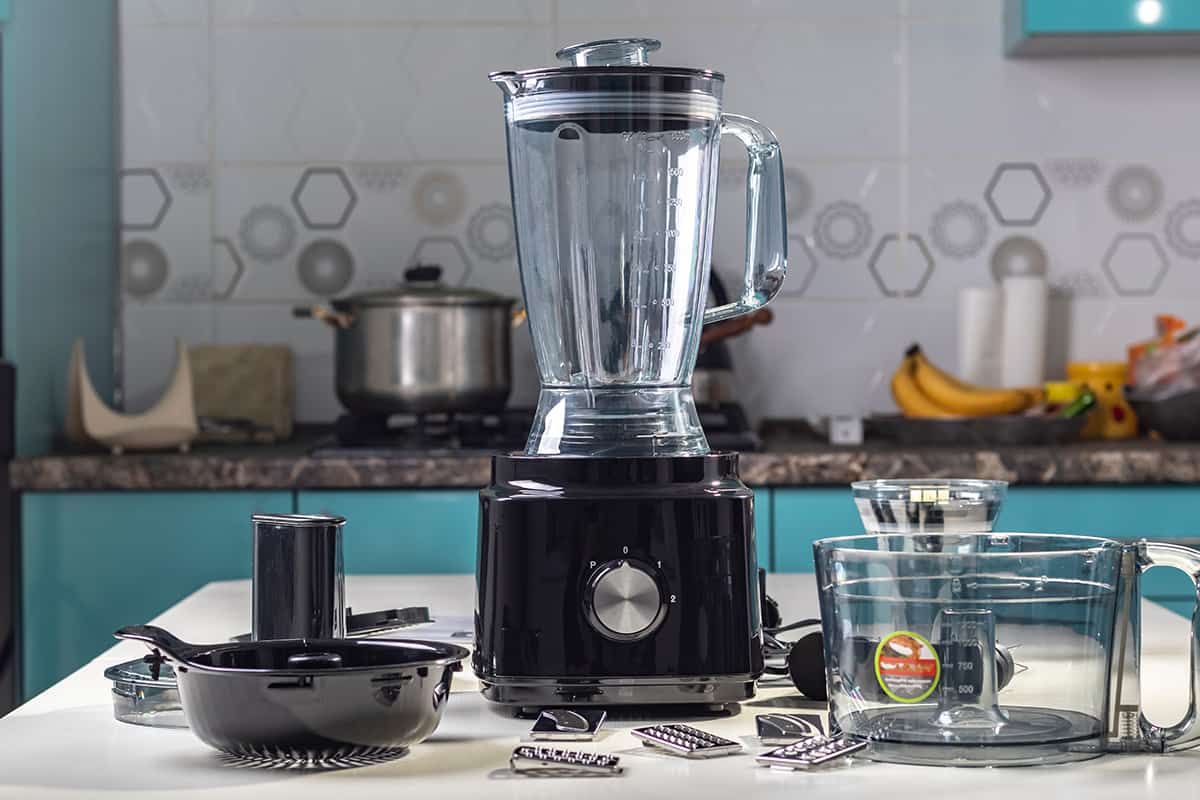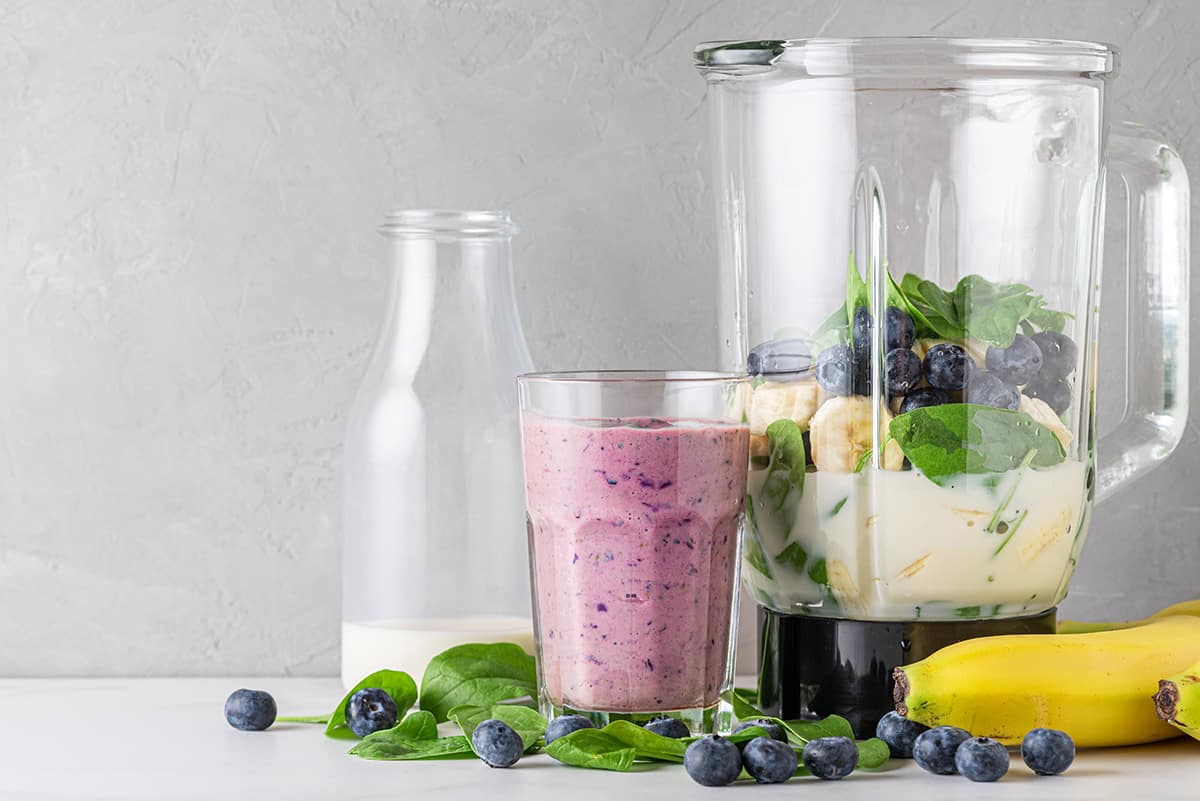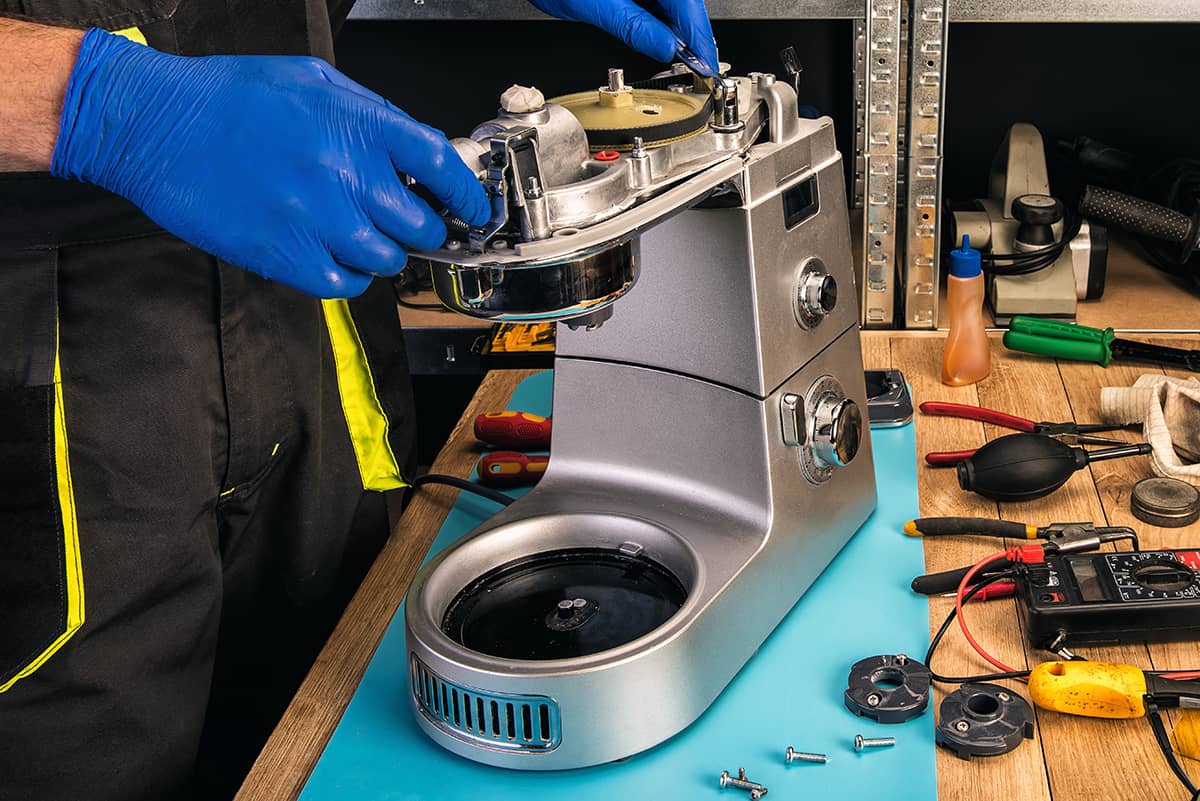If you’re like me, you cry every time you try to chop onions. Sure, you could get yourself a pair of onion goggles like Phil Dunphy on Modern Family, or you can use an electric kitchen appliance to do the job for you. But can a food processor really chop onions?
A food processor does quick work out of chopping onions. The only problem is that the onion bits might not be completely uniform in size. Use the pulse function to chop the onions in 1-second increments for 7 seconds or less.
In this guide, I’ll provide a step-by-step guide on how to chop onions in a food processor. I’ll also explain what a food processor can and cannot do to your onions, as well as alternative tools for chopping onions.
How to Chop Onions Without the Waterworks
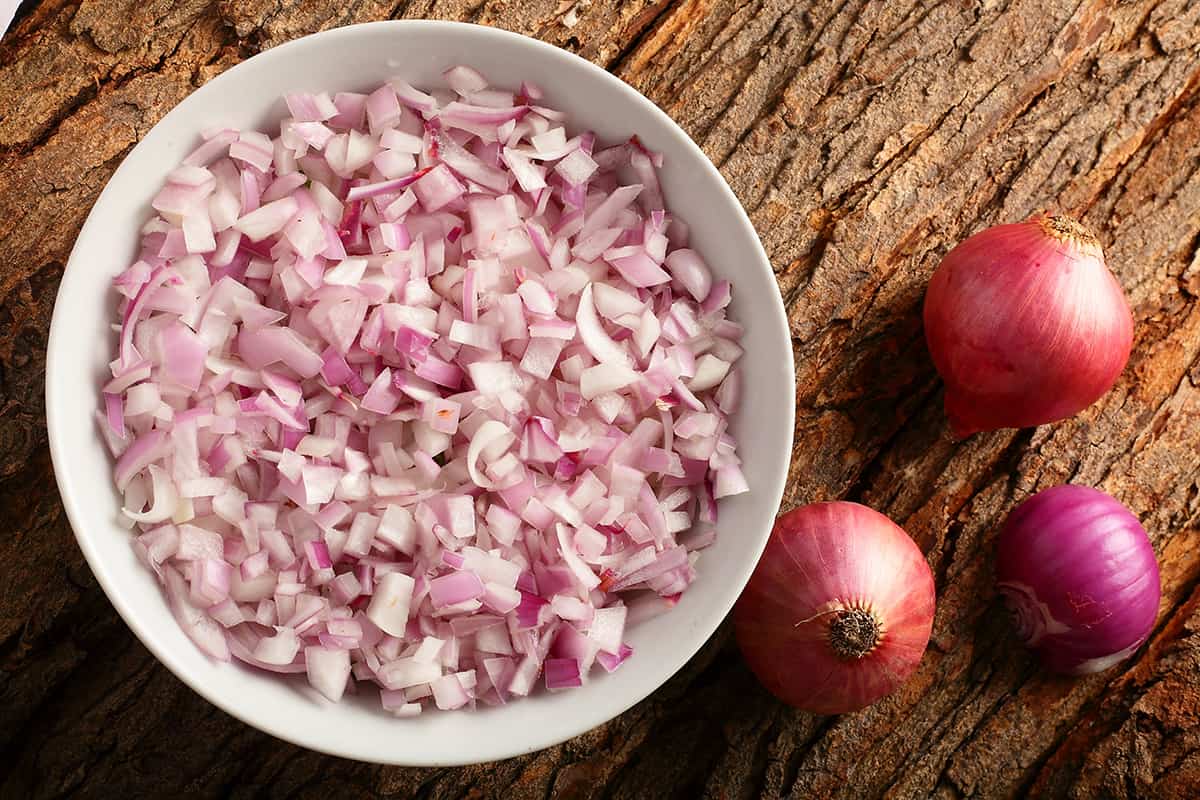
For the uninitiated, chopping onions might seem like an ordinary kitchen task, but for those who have spent more than 5 seconds in front of a halved onion, you know how much of a challenge it can be.
When the flesh of an onion is exposed, it will release an odorous, invisible gas that turns into sulfenic acid. When this acid gets in your eyes, it begins causing tears to pour out your eye ducts like you just finished watching Titanic for the first time.
Of course, there are ways to prevent the waterworks from happening. Here’s how it’s done.
Place the onion in the freezer for 5 minutes before chopping it
You can reduce the potency of an onion’s chemicals by freezing the onion for 5 minutes before cutting into it. When the liquids inside the onion freeze, it will take them a bit of time to come up to room temperature and begin releasing the odorous gases into the air.
If you feel the tears coming before you’ve finished chopping all your onions, place the remaining onion in your freezer for another 5 minutes before continuing.
Drop the onions in a bowl of ice water for 30 minutes before chopping them
If you don’t have access to a freezer but have a bag of ice on hand, create an ice bath for your onions instead. Just mix a bunch of ice into a bowl of water before dunking your onions in there.
The coldness of the water will semi-freeze the liquids and gases inside the onion bulb, preventing them from immediately going airborne the moment you cut into the onion’s flesh. Alternatively, you can pop the onions in the fridge for 30 minutes before cutting into them.
Leave the onion’s stem intact
Although the sulfur compounds can be found all over the inside of an onion, the stem section is where the highest chemical concentration can be found. So, to prevent most of the gases from going airborne, carefully cut around the stem before chopping the onion into tiny bits.
Getting this technique takes a bit of practice to master, so you might want to keep your onion goggles within an arm’s reach while making your first attempt. You can either go back to the stem section to finish chopping the onion or toss it in your compost pile.
Use an ultra-sharp knife
A dull blade will squeeze and mash the layers of an onion, releasing more of its juices and gases. A sharp knife, on the other hand, will leave the beautiful layers intact while only trace amounts of liquid escape the onion’s flesh. So, only use sharp knives when cutting into onions.
Take a look at this video to find out how you can sharpen dull knives. You’ll need a set of honing steel and a knife sharpener before you get started. Also, consider getting a pair of cut-resistant gloves in case you slip up while trying to sharpen your knives.
Chop the onions in a food processor
A food processor is great for a hundred different things, from chopping to slicing and julienning. You’ll need the correct attachments to slice and julienne, but you can chop virtually any kind of ingredient, including onions, with the standard S-style knife attachment.
How to Chop Onions in a Food Processor
Instead of using a knife and exposing yourself to tear-jerking gases, you can do the smart thing and chop your onion in a food processor. Here’s how it’s done:
- Peel the onion’s papery skin off the flesh.
- Swiftly but carefully cut the onion into quarters.
- Quickly pop the quarters inside the bowl of a food processor.
- Use the pulse function to blitz the onions 5 to 7 times in 1-second increments.
- Scrape down the sides of the bowl every few seconds to make sure each chunk gets pulverized evenly.
- Remove the onion from the bowl and place it in a dish for further processing.
It sounds simple enough, doesn’t it? What would usually take you more than 2 minutes to do can be done in under 45 seconds with a food processor! However, that doesn’t mean the gases won’t get in your eyes while you’re quartering the onion bulb.
If you want to preserve the onion’s layers, consider installing a slicing disc in your food processor. As you force the onion through the feed tube, the slicing disc will swiftly remove even layers from the onion that you can separate later on. A julienning disc also works beautifully if you want more uniform onion chunks.
Alternative Tools for Chopping Onions
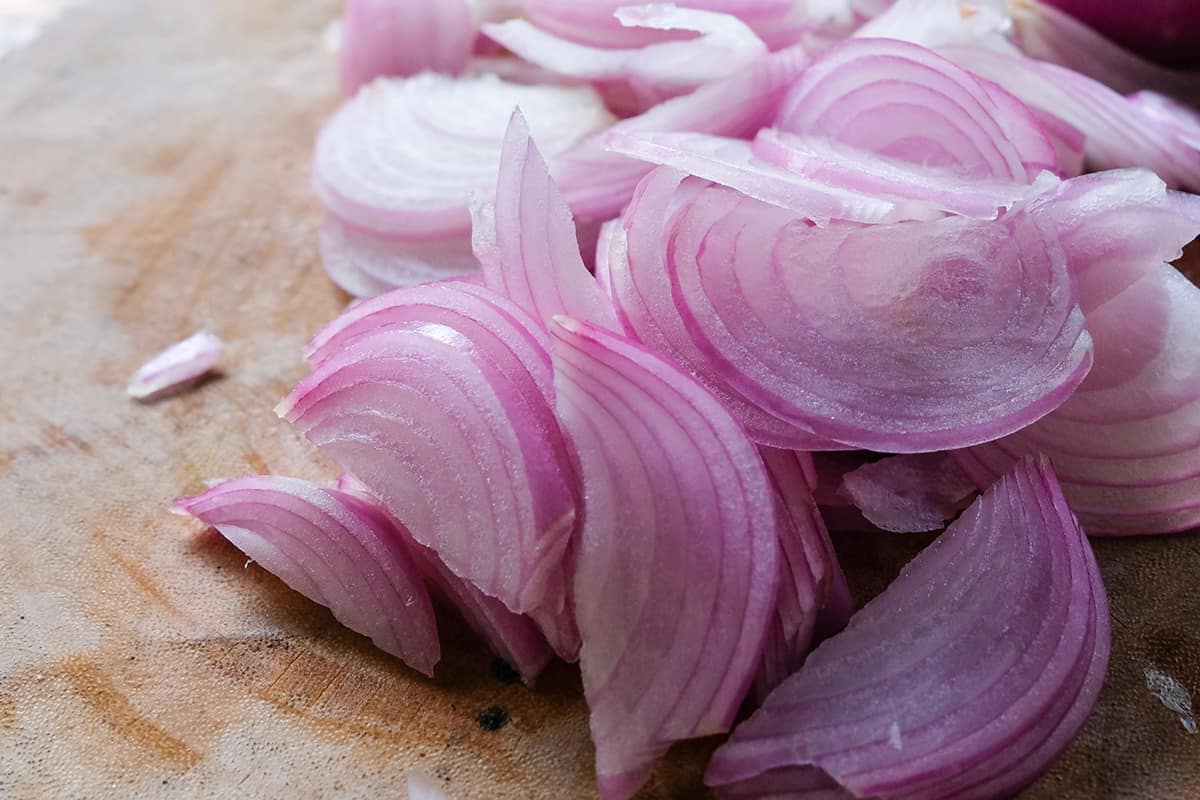
If you don’t have a food processor, don’t fret—there are still countless tools you can use to chop your onions. Here are a few alternative tools for chopping onions.
Chopper
A chopper is simply a smaller version of a food processor. Some models, such as the Fullstar Onion Chopper, don’t require electricity. Simply quarter your onions and place the chopper over the onion chunk before repeatedly pushing on the chopping button. The more you press down on the button, the more finely you’ll chop the onion.
Blender
Although blenders are mainly used for liquifying ingredients, you can use it as a chopper in a pinch. Quarter your onion and place 1 or 2 quarters inside the blender pitcher. Use the pulse function to blend the onion 5 to 7 times in 1-second increments, scraping down the side every few pulses to blend the pieces evenly. If you blend for too long, you’ll end up with onion purée.
Mandolin Cutter
A mandolin cutter is an excellent hand tool that lets you slice, dice, mince, cut, and julienne virtually any kind of vegetable. Just make sure you use the guard whenever you try to pass your onions over the sharp blade. A pair of cut-resistant gloves would definitely come in handy when using a mandolin cutter.
Vegetable Slicer
A vegetable slicer is another manual tool. As its name suggests, you can slice or cut your vegetables into neat, uniform chunks. There are all sorts of vegetable slicers out there, but this one by Mueller is one of the easiest to use. It even has multiple blade attachments that let you julienne, grate, and slice vegetables into uniform chunks.
Vegetable Dicer
A vegetable dicer cuts vegetables into even-size cubes. All you have to do is mount your vegetable between the grid blades and the hammer and push the lever down. This model by TUNTROL is one of the most reliable vegetable dicers on the market, but it can take several minutes to assemble and disassemble the tool.
Or you can try out the Alligator deicer, which comes with a plastic tub that catches all of your onion chunks and prevents its gases from getting into your eyes.
